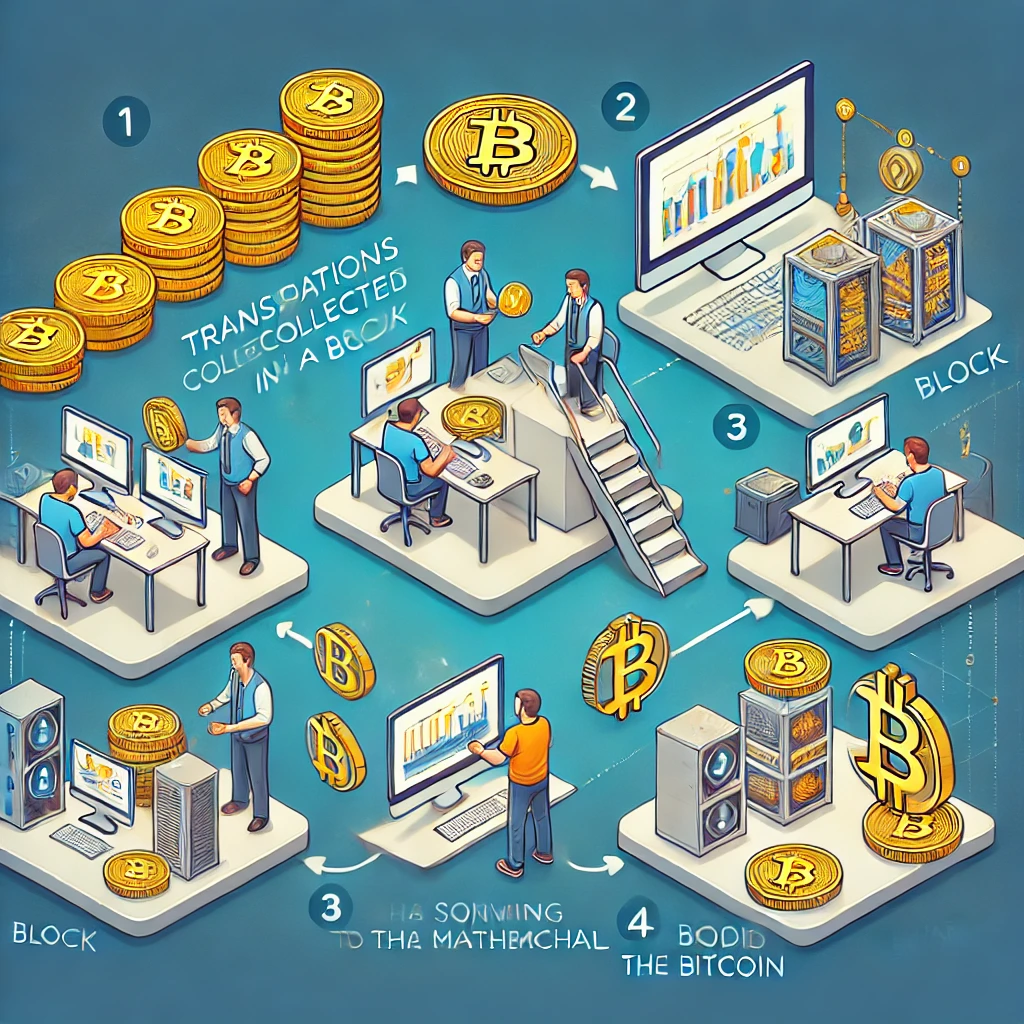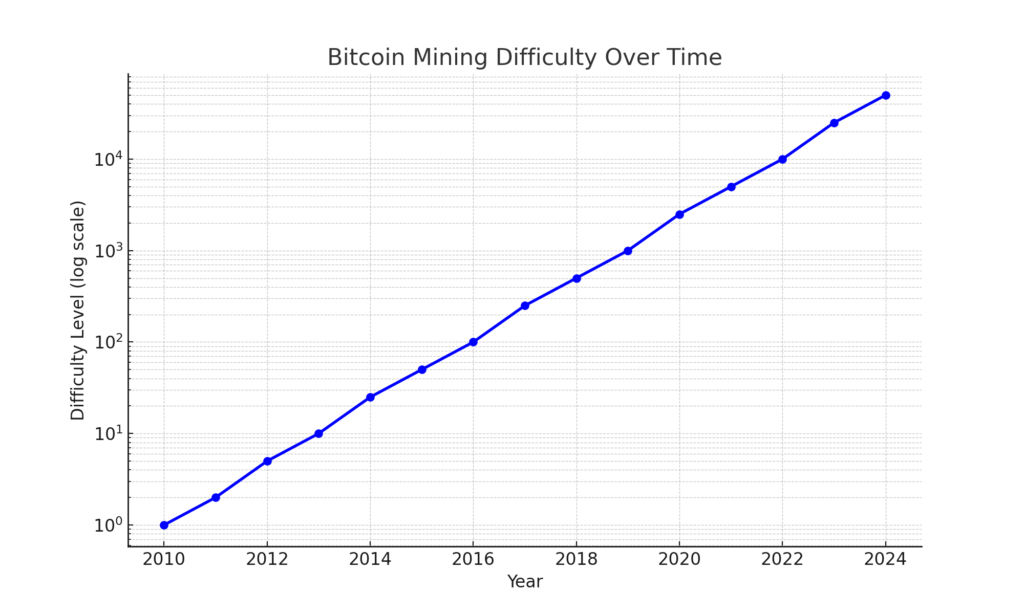How Does Bitcoin Mining Work?

What is Bitcoin Mining?
Bitcoin mining is the process of adding new transactions to the blockchain, the public ledger of Bitcoin transactions. Miners use powerful computers to solve complex puzzles, ensuring that the Bitcoin network operates securely and efficiently. As a reward, they earn Bitcoin for their efforts.
Imagine Bitcoin mining as a global race where participants compete to solve a digital puzzle. The winner gets to add the latest transactions to the blockchain and receives Bitcoin as a prize. Without mining, there would be no new Bitcoin, and the system wouldn’t function. If you’re curious about Bitcoin’s role in the broader financial landscape, check out What is Bitcoin? A Beginner’s Guide to Digital Currency.
How Does Bitcoin Mining Work?
At the heart of Bitcoin mining is a process called hashing. Miners use specialized computers to guess a unique number (called a “nonce”) that, when combined with other data and hashed, produces a result that meets specific criteria set by the network. This is what secures the blockchain.
Each time a miner guesses the right number, they validate a block of transactions and add it to the blockchain. This ensures the integrity of the system and prevents fraud, like double-spending.

How Complex is Bitcoin Mining Now?
Bitcoin mining has become increasingly complex due to the rising difficulty level of the puzzles that miners need to solve. This difficulty is adjusted approximately every two weeks to ensure that new blocks are mined at a steady rate of one every 10 minutes. As more miners join the network and the total computational power (hash rate) increases, the puzzles become harder to solve.
Because of this, mining is no longer feasible for individuals using regular computers or GPUs. Specialized hardware called ASIC miners is required, and even then, mining is dominated by large operations with access to low-cost electricity and vast resources. This has made mining a competitive industry, leaving smaller miners to join pools or explore alternatives like earning Bitcoin through other methods.
Bitcoin Mining Difficulty Over Time

What Do You Need to Mine Bitcoin?
To mine Bitcoin, you’ll need specialized hardware called ASIC miners. These machines are designed specifically for mining and are far more efficient than regular computers. Additionally, mining software is required to connect your hardware to the Bitcoin network.
For beginners, joining a mining pool is a smart choice. Mining pools are groups of miners who work together to solve puzzles faster, sharing the rewards among participants. If you’re interested in learning how Bitcoin can generate income beyond mining, read How to Make Money with Bitcoin: A Guide for Beginners.
Is Bitcoin Mining Profitable?
Mining can be profitable, but it depends on factors like electricity costs, hardware expenses, and Bitcoin’s price. On average, miners with access to low-cost electricity and efficient machines are more likely to turn a profit.
However, mining rewards decrease over time due to halving events. These occur every four years and cut the Bitcoin reward in half. For example, the current reward is 3.125 Bitcoin per block. To better understand Bitcoin’s monetary structure, you can explore What is Bitcoin? A Beginner’s Guide to Digital Currency.
Challenges in Bitcoin Mining
Mining isn’t without its challenges. It requires significant energy, leading to high electricity costs and environmental concerns. Many miners are now shifting to renewable energy sources to reduce their carbon footprint.
Additionally, the increasing difficulty of mining makes it harder for small-scale miners to compete. Regulatory hurdles in certain countries can also make mining risky. For alternatives to mining, consider exploring other ways to make money with Bitcoin.
How to Start Mining Bitcoin
If you’re ready to start mining, here’s how:
- Choose Your Hardware: Invest in an ASIC miner suited to your budget and goals.
- Install Mining Software: Select a program compatible with your hardware.
- Join a Mining Pool: Increase your chances of earning rewards by collaborating with other miners.
- Monitor and Optimize: Track your progress and ensure your setup is running efficiently.
Start small and scale up as you gain experience. Remember to calculate your costs to ensure profitability.